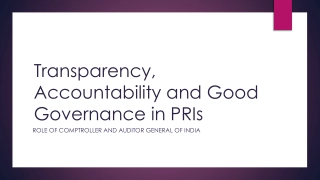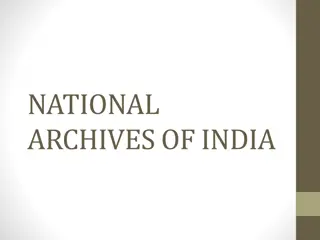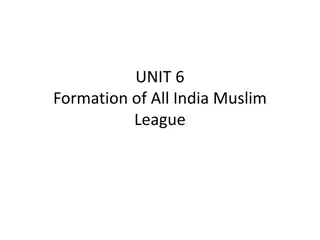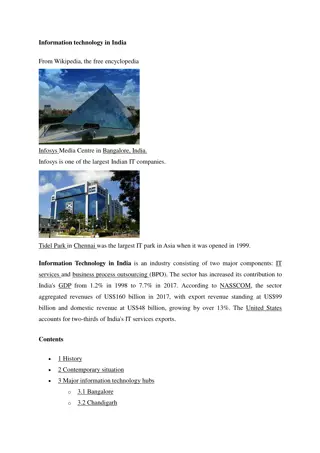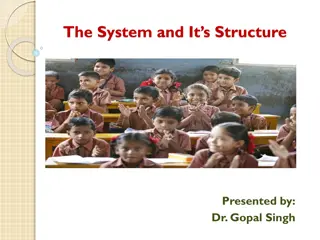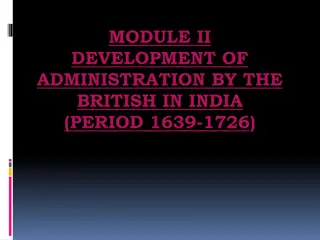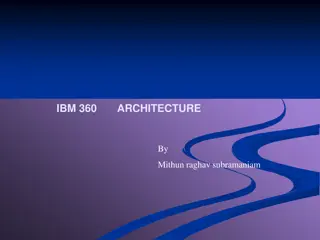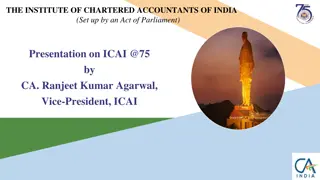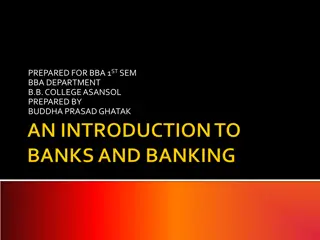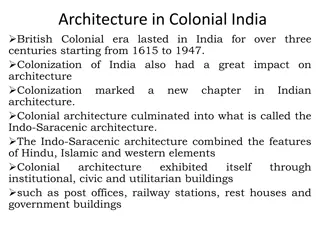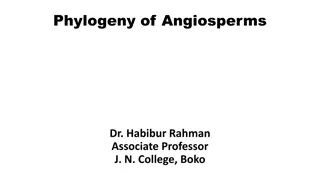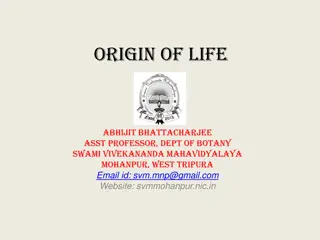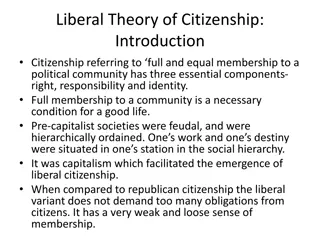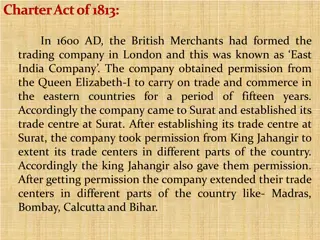Evolution of Panchayati Raj System in India
The Panchayati Raj system in India aims at rural development and self-government at the grassroots level. This system has been implemented in all states except Nagaland, Meghalaya, and Mizoram, and in certain Union Territories. Various committees such as the Balwant Rai Mehta Committee have played a vital role in recommending steps for establishing democratic decentralized local governance through the Panchayati Raj. The system includes a three-tier structure comprising gram panchayat, Panchayati Samiti, and Zila Parishad, with a focus on planning and development.
Download Presentation

Please find below an Image/Link to download the presentation.
The content on the website is provided AS IS for your information and personal use only. It may not be sold, licensed, or shared on other websites without obtaining consent from the author. Download presentation by click this link. If you encounter any issues during the download, it is possible that the publisher has removed the file from their server.
E N D
Presentation Transcript
Panchayat Raj System in Tamil Nadu .,M.A.,B.Ed.,M.PHIL.,Ph.D Head & Asst.Professor Asst.Professor Department of History Department of History Bon Secours College for Women Bon Secours College for Women Thanjavur Thanjavur Mrs. R. Mrs. R. Brahathambal Brahathambal.,M.A.,B.Ed.,M.PHIL., Head & Ph.D., .,
Introduction to Panchayati Raj Rural development is one of the main objectives of Panchayati Raj and this has been established in all states of India except Nagaland, Meghalaya and Mizoram, in all Union Territories except Delhi. and certain other areas.
Introduction to Panchayati Raj These areas include, The scheduled areas and the tribal areas in the states The hill area of Manipur for which a district council exists and Darjeeling district of West Bengal for which Darjeeling Gorkha Hill Council exists
Evolution of Panchayati Raj There were a number of committees appointed by the government of India to study the implementation of self-government at the rural level and also recommend steps in achieving this goal.
Evolution of Panchayati Raj The committees appointed are as follows: Balwant Rai Mehta Committee Ashok Mehta Committee G V K Rao Committee L M Singhvi Committee
Balwant Rai Mehta Committee & Panchayati Raj examine and suggest measures for better working of the Community Development Programme and the National Extension Service. The committee suggested the establishment of democratic decentralised local government which came to be known as the Panchayati Raj. The committee was appointed in 1957, to
Balwant Rai Mehta Committee & Panchayati Raj Recommendations by the committee: Three-tier Panchayati Raj system: gram panchayat, Panchayati Samiti and Zila Parishad. Directly elected representatives to constitute the gram panchayat and indirectly elected representatives to constitute the Panchayat Samiti and Zila Parishad. Planning and development are the primary objectives of the Panchayati Raj system.
Balwant Rai Mehta Committee & Panchayati Raj Recommendations by the committee: Panchayat Samiti should be the executive body and Zila Parishad will act as the advisory and supervisory body. District collector to be made as the chairman of the Zila Parishad. It also requested for provisioning resources so as to help them discharge their duties and responsibilities.
Ashok Mehta Committee & Panchayati Raj measures to revive and strengthen the declining Panchayati Raj system in India. The committee was appointed in 1977 to suggest
Ashok Mehta Committee & Panchayati Raj The key recommendations are: The three-tier system should be replaced with two- tier: Zila Parishad (district level) and the Mandal Panchayat (a group of villages). District level as the first level of supervision after the state level.
Ashok Mehta Committee & Panchayati Raj The key recommendations are: Zila Parishad should be the executive body and responsible for planning at the district level. The institutions (Zila Parishad and the Mandal Panchayat) to have compulsory taxation powers to mobilise their own financial resources.
G V K Rao Committee & Panchayati Raj The committee was appointed by the planning commission in 1985. It recognised that development was not seen at the grassroot level due to bureaucratisation resulting in Panchayat Raj Institutions addressed as grass without roots .
G V K Rao Committee & Panchayati Raj Hence it made some key recommendations which are as follows: Post of District Development Commissioner to be created. He will be the chief executive officer of the Zila Parishad. Elections to the levels of Panchayati Raj systems should be held regularly.
G V K Rao Committee & Panchayati Raj Hence it made some key recommendations which are as follows: Post of District Development Commissioner to be created. He will be the chief executive officer of the Zila Parishad. Elections to the levels of Panchayati Raj systems should be held regularly.
L M Singhvi Committee & Panchayati Raj government of India in 1986 with the main objective to recommend steps to revitalise the Panchayati Raj systems for democracy and development. The committee was appointed by the
L M Singhvi Committee & Panchayati Raj The following recommendations were made by the committee. The committee recommended that the Panchayati Raj systems should be constitutionally recognised. It also recommended constitutional provisions to recognise free and fair elections for the Panchayati Raj systems. The committee recommended reorganisation of villages to make the gram panchayat more viable.
L M Singhvi Committee & Panchayati Raj The following recommendations were made by the committee. It recommended that village panchayats should have more finances for its activities. Judicial tribunals to be set-up in each state to adjudicate matters relating to the elections to the Panchayati Raj institutions and other matters relating to their functioning.


